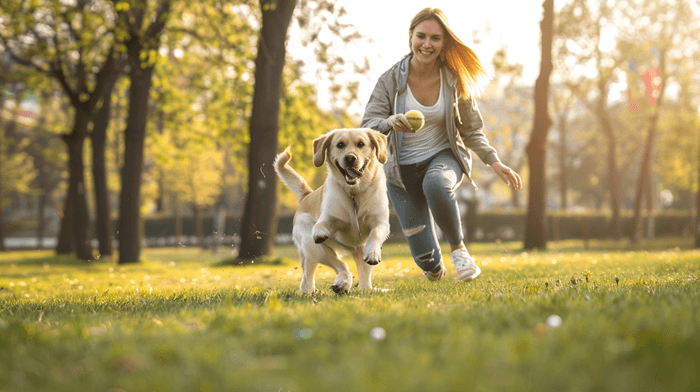
Introduction: Why Regular Exercise Matters for Your Dog
As pet owners, we often find ourselves juggling busy schedules while trying to ensure that our furry companions receive the love and care they deserve. One vital aspect that sometimes gets overlooked is regular physical activity. Just like humans, dogs thrive on exercise, and incorporating a daily routine of physical activity can profoundly impact their overall health and well-being.
Regular exercise not only helps to maintain a healthy weight but also boosts a dog’s mental health, reduces behavioral issues, and strengthens the bond between owner and pet. Moreover, engaging in physical activities can prevent various health problems, extend your dog’s lifespan, and enhance their quality of life. In this article, we will explore the numerous benefits of regular physical activity for your dog and provide actionable tips on how to integrate exercise into your daily routine.
In the following sections, we will delve deeper into the essential reasons why physical activity is crucial for your dog, practical steps for implementing an exercise regimen, common pitfalls to avoid, and scientific evidence supporting the importance of keeping your canine active.
Benefits of Regular Physical Activity for Your Dog
1. Improved Physical Health

Regular exercise significantly enhances a dog’s physical health. It helps to maintain a healthy weight, reducing the risk of obesity, which can lead to serious health issues such as diabetes, heart disease, and joint problems. Engaging in activities like walking, running, and playing fetch promotes cardiovascular fitness, strengthens muscles, and improves overall endurance.
- Weight Management: Obesity is a growing concern among dogs, often resulting from a sedentary lifestyle. Regular exercise burns calories and helps maintain an ideal weight, preventing obesity-related health problems.
- Joint and Bone Health: Weight-bearing activities strengthen bones and improve joint health, which is especially important for older dogs or those prone to arthritis. Research shows that dogs who engage in regular low-impact exercises, such as swimming, exhibit improved joint mobility and overall physical function.
- Cardiovascular Fitness: Activities that elevate your dog’s heart rate, such as jogging or playing fetch, improve cardiovascular health. A well-conditioned heart is essential for longevity and overall vitality.
2. Enhanced Mental Stimulation
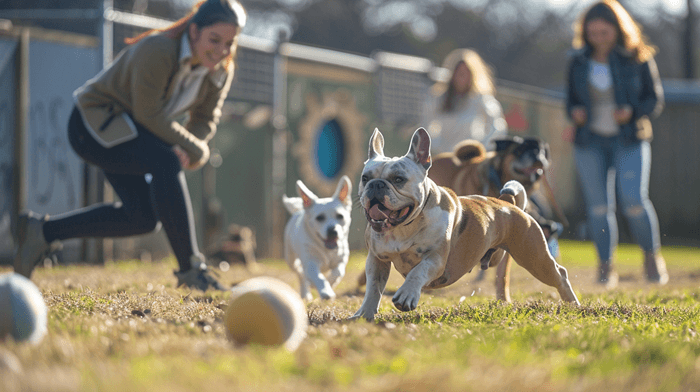
Physical activity is not just about keeping a dog physically fit; it also plays a critical role in their mental well-being. Dogs are intelligent creatures that require mental stimulation to thrive.
- Cognitive Engagement: Activities that require focus, such as agility training or scent work, challenge a dog’s brain, preventing boredom and associated behavioral issues. Studies have shown that mental exercise is as important as physical exercise for a dog’s overall health.
- Reduced Anxiety and Stress: Regular exercise helps to alleviate anxiety and stress in dogs by releasing endorphins, the body’s natural mood lifters. This can lead to a calmer and more relaxed pet. Dogs that receive regular exercise exhibit fewer symptoms of anxiety, such as barking, destructive behavior, and hyperactivity.
- Improved Problem-Solving Skills: Engaging in physical activities that challenge your dog’s problem-solving abilities, like obstacle courses or fetch with a twist, can enhance their intelligence and adaptability.
3. Behavioral Benefits
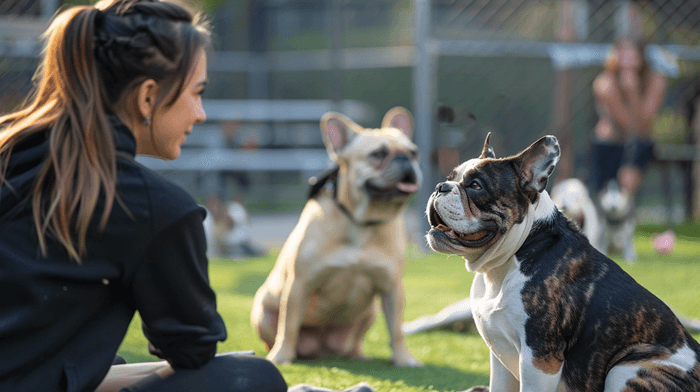
Incorporating regular physical activity into your dog’s routine can lead to significant behavioral improvements. A well-exercised dog is often a well-behaved dog.
- Reduced Destructive Behavior: Dogs that lack adequate exercise may engage in destructive behaviors like chewing furniture or excessive barking. Physical activity helps expend pent-up energy, reducing these undesirable behaviors. When dogs are properly exercised, they are less likely to seek out mischief as a way to cope with boredom.
- Increased Socialization: Activities like going to the dog park or participating in group classes provide opportunities for socialization, helping to improve a dog’s interactions with other pets and people. Regular socialization is vital for a dog’s emotional development and can help reduce aggression or fearfulness in unfamiliar situations.
- Establishment of a Routine: Regular exercise establishes a routine that dogs thrive on. A predictable schedule can help reduce anxiety and create a sense of security in your dog, leading to a calmer demeanor.
4. Stronger Bond with Owners
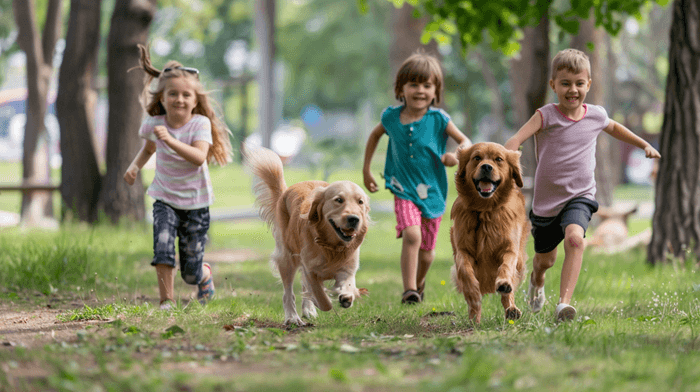
Engaging in physical activities together can strengthen the bond between you and your dog. Whether it’s a daily walk, playing fetch in the yard, or hiking together, shared experiences create lasting memories.
- Quality Time: Spending time exercising with your dog provides an opportunity to connect on a deeper level, reinforcing your relationship and mutual trust. Activities that involve teamwork, like hiking or running, can enhance your connection.
- Training Opportunities: Exercise can also be a time to reinforce training commands and teach new tricks, further enhancing the bond through positive interactions. Consistent training during physical activity can improve obedience and responsiveness, making outings more enjoyable for both you and your dog.
- Shared Achievements: Completing a physical challenge together, like a long hike or a fun agility course, fosters a sense of achievement and teamwork that strengthens your relationship.
5. Extended Lifespan
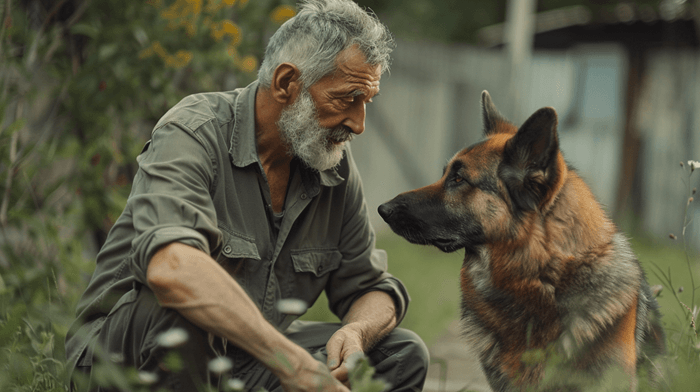
Regular physical activity contributes to a longer, healthier life for your dog. Studies have shown that active dogs tend to live longer than their sedentary counterparts.
- Overall Health Benefits: The combined effects of improved physical and mental health, along with reduced risk of diseases, contribute to a more extended lifespan. Regular exercise can delay the onset of age-related issues, such as cognitive decline or mobility problems.
- Enhanced Quality of Life: A well-exercised dog not only lives longer but also enjoys a higher quality of life, characterized by increased energy, happiness, and engagement with their environment. Active dogs are generally more engaged and less prone to health issues, resulting in a happier pet.
Practical Tips for Incorporating Regular Exercise into Your Dog’s Routine
1. Establish a Routine
- Set Specific Times: Set aside specific times each day for walks or playtime. Consistency is key to developing a habit for both you and your dog. Choose times that fit well into your daily schedule, making it easier to stick to your routine.
- Determine Activity Duration: Aim for at least 30 minutes to 2 hours of physical activity daily, depending on your dog’s breed, age, and energy level. Younger, more energetic dogs may require more extensive exercise, while older dogs may benefit from shorter, more frequent sessions.
2. Mix It Up
- Vary the Types of Activities: Vary the types of activities to keep your dog engaged. Alternate between walking, running, playing fetch, swimming, and participating in dog sports like agility or flyball. This variety prevents boredom and keeps your dog motivated.
- Incorporate Mental Challenges: Consider incorporating mental challenges, such as puzzle toys or training sessions, alongside physical exercise. Combining physical and mental stimulation creates a more fulfilling experience for your dog.
3. Use a Dog-Friendly Environment
- Explore New Areas: Explore local parks, hiking trails, or dog parks to provide a stimulating environment for your dog to explore. New environments can reignite your dog’s interest in exercise and encourage them to engage in different activities.
- Ensure Safety: Ensure that the area is safe and secure, allowing your dog to run freely without the risk of escaping or encountering dangerous situations. Always supervise your dog during playtime to ensure their safety.
4. Include Other Dogs
- Arrange Playdates: Arrange playdates with other dogs to encourage socialization and make exercise more enjoyable. Social interactions can significantly enhance your dog’s happiness and provide additional exercise opportunities.
- Join Group Activities: Group activities, like joining a dog walking club or participating in community events, can provide motivation for both you and your dog. Engaging with other dog owners fosters a sense of community and support.
5. Listen to Your Dog
- Pay Attention to Cues: Pay attention to your dog’s cues and adjust the intensity and duration of exercise based on their energy levels and physical condition. Every dog is unique, and recognizing their limits is essential for their safety.
- Avoid Overexertion: Avoid overexertion, especially in hot weather, and provide plenty of water and rest breaks. Keep an eye on your dog’s behavior; if they seem tired or disinterested, it may be time to slow down or take a break.
Common Mistakes to Avoid When Exercising Your Dog
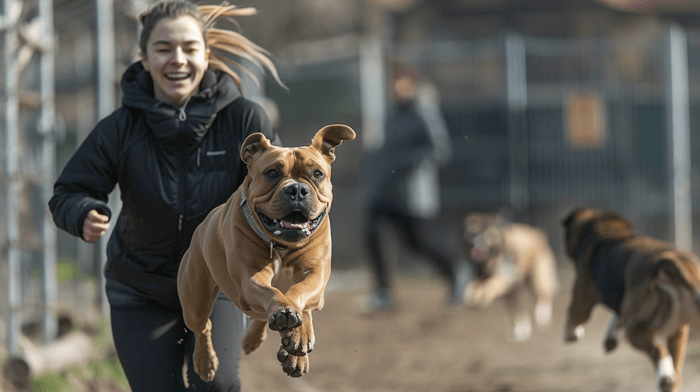
1. Skipping Warm-Up and Cool-Down
- Importance of Warm-Up: Just like humans, dogs need to warm up before intense exercise and cool down afterward to prevent injury. Start with a slow walk to warm up and finish with a gentle pace to cool down. This practice prepares their muscles for activity and aids in recovery.
2. Neglecting Breed-Specific Needs
- Research Exercise Requirements: Different breeds have varying exercise requirements. Research your dog’s breed to understand their specific needs and adjust their exercise routine accordingly. For instance, high-energy breeds may require more vigorous activities than low-energy breeds. Tailoring the routine to your dog’s breed ensures they receive adequate exercise.
3. Ignoring Weather Conditions
- Be Mindful of Temperature: Be mindful of extreme temperatures. Hot weather can lead to heat exhaustion, while cold weather can pose risks for certain breeds. Adjust exercise routines based on the weather to keep your dog safe and comfortable. During hot days, opt for early morning or late evening walks; in winter, consider shorter, more frequent outings.
4. Not Providing Enough Mental Stimulation
- Balance Physical and Mental Exercise: Exercise isn’t solely about physical activity; mental engagement is equally important. Incorporate puzzle toys, training games, and interactive play to stimulate your dog’s mind during and after physical activities. Engaging both aspects of their well-being creates a more balanced lifestyle.
5. Forgetting Regular Vet Check-Ups
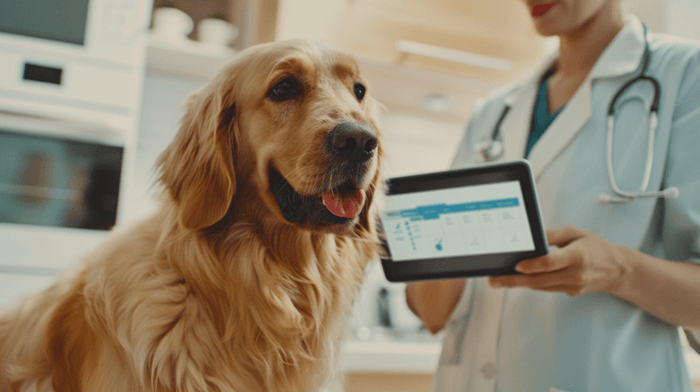
- Importance of Veterinary Guidance: Regular veterinary check-ups are crucial to ensure your dog’s overall health, especially before starting a new exercise regimen. Your vet can provide valuable insights on your dog’s fitness level, any existing health issues, and appropriate activities. Address any concerns regarding your dog’s health before introducing new exercises or increasing intensity.
Scientific Backing for Regular Exercise
1. Studies on Physical Health
Numerous studies support the link between regular exercise and improved physical health in dogs. Research published in the Journal of the American Veterinary Medical Association found that regular exercise helps prevent obesity, reduces the risk of joint problems, and promotes cardiovascular health. For instance, a study by the Veterinary Medical Association revealed that dogs who engaged in consistent physical activity had a 30% lower risk of developing heart disease compared to their sedentary counterparts.
2. Mental Health Benefits
The mental health benefits of regular physical activity have also been extensively studied. A paper published in the Journal of Veterinary Behavior found that dogs participating in daily physical activities exhibited significantly lower levels of anxiety and stress. The study noted that physical activity, combined with mental stimulation, contributes to better overall mental health and well-being in dogs.
3. Behavior Modification
Research published in the Applied Animal Behaviour Science journal indicates that regular exercise can modify undesirable behaviors in dogs. Dogs receiving adequate physical activity were observed to exhibit fewer behavioral issues such as excessive barking, destructiveness, and hyperactivity. This study highlights the importance of exercise in promoting positive behavior and reducing the incidence of behavioral problems.
4. Enhanced Lifespan
A longitudinal study conducted by the Pet Food Industry Association found that dogs that received regular physical activity lived an average of 15% longer than those with sedentary lifestyles. This research underscores the impact of a physically active lifestyle on longevity, reinforcing the importance of exercise for your dog’s health and vitality.
Conclusion: Make Exercise a Priority for Your Dog

In conclusion, regular physical activity is essential for your dog’s overall health and happiness. From improved physical and mental health to better behavior and a stronger bond with you, the benefits of exercise are undeniable. As a responsible pet owner, prioritizing your dog’s exercise routine can lead to a longer, healthier, and happier life for your furry friend.
As you implement these strategies, remember to be consistent and attentive to your dog’s needs. With patience and dedication, you can create a fulfilling exercise routine that benefits both you and your pet.
If you’re eager to learn more about how to train your dog effectively while enhancing their quality of life, consider investing in the Dog Trainer Bible. This comprehensive guide offers valuable insights and techniques to help you understand your dog better and create a harmonious relationship. Start your journey toward a happier, healthier dog today by purchasing the Dog Trainer Bible!
